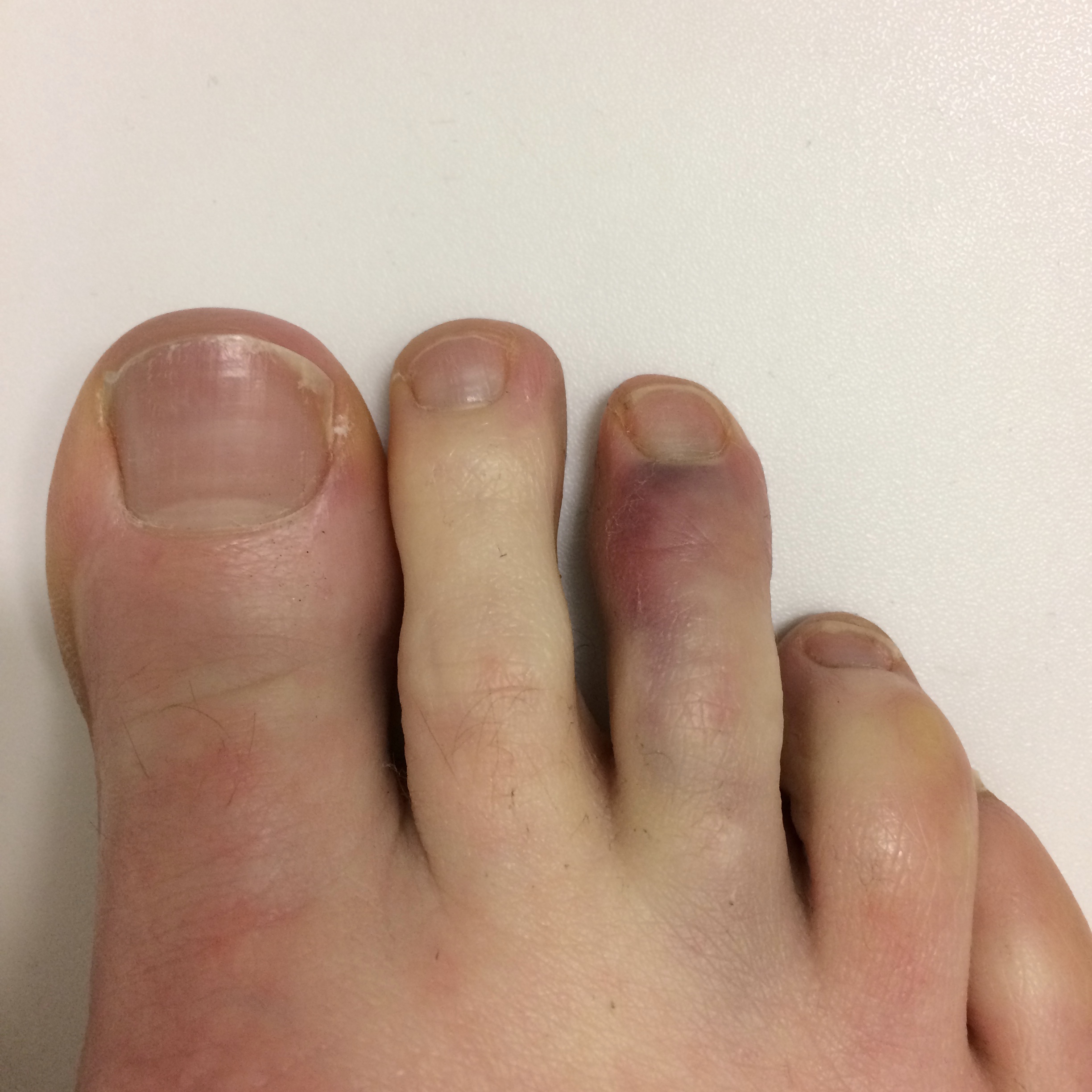Broken Toe: Symptoms, Causes, Treatment
What are the symptoms of a broken toe?
The symptoms of a broken toe can vary depending on the severity of the injury, but common symptoms include:
- Pain: Pain is usually the first symptom of a broken toe. The pain may be sharp or throbbing and may worsen when you try to move or put weight on the toe.
- Swelling: The toe may become swollen, and the skin around the injury may appear red or bruised.
- Difficulty walking: If the broken toe is on your foot, you may have difficulty walking or putting weight on the affected foot.
- Deformity: In some cases, a broken toe may cause the toe to look crooked or deformed.
- Stiffness: You may experience stiffness in the toe, especially if the injury is not treated promptly.
- Tenderness: The toe may be tender to the touch, and you may feel pain when you press on or around the broken area.
- Difficulty wearing shoes: Swelling and pain may make it difficult to wear shoes comfortably.
It’s important to see a healthcare provider if you suspect you have a broken toe, as untreated fractures can lead to complications and long-term problems. Your healthcare provider can perform a physical examination and may order imaging tests, such as X-rays, to determine the extent of the injury and recommend appropriate treatment.
What are the causes of a broken toe?
A broken toe, or toe fracture, can be caused by a variety of factors, including:
- Trauma: The most common cause of a broken toe is trauma or injury to the toe. This can occur from stubbing the toe against a hard surface, dropping a heavy object on the toe, or crushing the toe in an accident.
- Sports injuries: Participating in sports or activities that involve running, jumping, or sudden stops and starts can increase the risk of a broken toe. This is especially true in sports where the feet are not protected, such as soccer or basketball.
- Falls: Falling, particularly from a height or onto a hard surface, can cause a broken toe.
- Repetitive stress: Overuse or repetitive stress on the toe, such as from activities like ballet or running, can lead to stress fractures or small cracks in the toe bones.
- Medical conditions: Certain medical conditions, such as osteoporosis or bone cancer, can weaken the bones and increase the risk of fractures, including in the toes.
- Improper footwear: Wearing shoes that are too tight or do not provide adequate support can increase the risk of a broken toe, especially if the shoes are worn during activities that put stress on the feet.
- Bone abnormalities: Some people may be born with abnormalities in the structure of their bones, such as unusually shaped or weak bones, which can increase the risk of fractures.
It’s important to seek medical attention if you suspect you have a broken toe, as untreated fractures can lead to complications and long-term problems. Your healthcare provider can perform a physical examination and may order imaging tests, such as X-rays, to determine the extent of the injury and recommend appropriate treatment.
What is the treatment for a broken toe?
The treatment for a broken toe depends on the severity of the injury. For mild to moderate fractures, the following treatments may be recommended:
- Rest: Resting the injured toe and avoiding putting weight on it can help promote healing.
- Immobilization: Splinting or buddy taping the broken toe to an adjacent toe can help keep it stable and prevent further injury.
- Ice: Applying ice to the injured toe can help reduce pain and swelling.
- Elevation: Elevating the injured toe above the level of the heart can help reduce swelling.
- Pain medication: Over-the-counter pain medications, such as ibuprofen or acetaminophen, can help relieve pain and reduce inflammation.
- Avoiding certain activities: Avoiding activities that could further injure the toe, such as running or jumping, until it has healed.
In more severe cases or if the toe is out of alignment, your healthcare provider may need to realign the broken pieces of bone (reduction) and immobilize the toe with a splint or cast. Surgery is rarely needed for a broken toe unless the fracture is severe or involves multiple breaks.
It’s important to follow your healthcare provider’s instructions for care and to attend any follow-up appointments. Most broken toes heal within 4 to 6 weeks with proper care, but it may take longer for more severe fractures.




